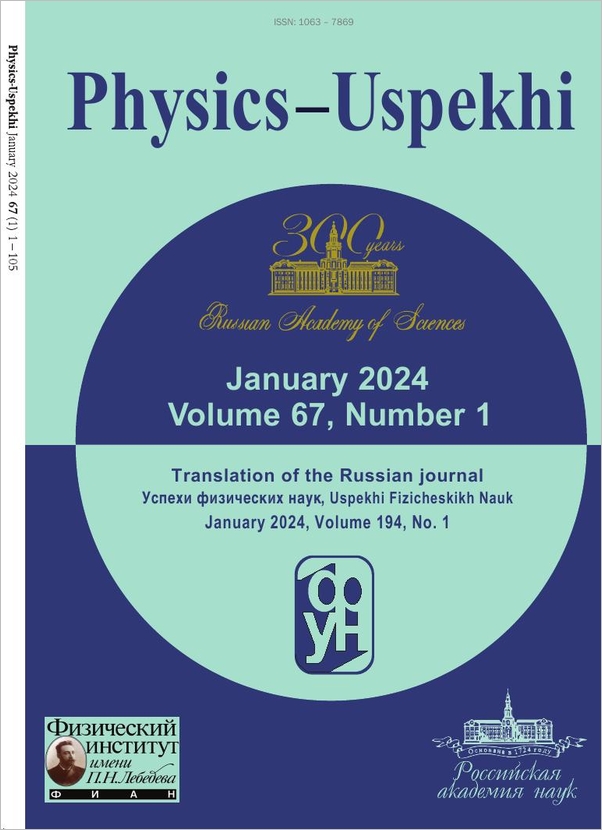|
This article is cited in 103 scientific papers (total in 104 papers)
REVIEWS OF TOPICAL PROBLEMS
The Vavilov–Cerenkov effect and the Doppler effect in the motion of sources with superluminal velocity in vacuum
B. M. Bolotovskii, V. L. Ginzburg
P. N. Lebedev Physical Institute, the USSR Academy of Sciences, Moscow
Abstract:
It is customary to consider only “subluminal” light sources, or sources moving with a velocity $v$ lower than the velocity of light in vacuum $(c)$. It is assumed in this connection that the Vavilov–Cerenkov effect and the anomalous Doppler effect are possible only in media and waves for which the refractive index $n(\omega)>1$. For this reason, the phase velocity of the waves is $c_{ph}=[c/n(\omega)]<c$, and these waves can be emitted by a subluminal source if $v>c_{ph}$. Yet, as is well known, there exist also “superluminal” sources, with velocity $v>c$. Examples are light spots produced on a remote screen by a rotating source of light or particles. The spot velocity is $v=\Omega R$, where $\Omega$ is the angular velocity of source rotation and $R$ is the distance to the screen. The condition $v>c$ can be realized on the Earth, and is practically always realized under astronomical conditions for pulsar radiation. It is emphasized in the article that superluminal sources are equivalent in a wide range to subluminal ones, and, concretely, can generate Cerenkov radiation in vacuum and in a medium with $n(\omega)<1$. The article considers several corresponding possibilities. From this point of view of radiation theory, a major difference between the superluminal and subluminal sources is that the former can not be individual particles (electrons, protons, etc.), since their velocity is always smaller than $c$. Superluminal sources, which must thus consist of aggregates of particles, must thus have nonzero dimensions, and this leads to a corresponding formation of a spectrum of the radiated frequencies on the short-wave side. Regardless of whether superluminal sources will find interesting applications in physics and astronomy, a study of the radiation of superluminal sources of electromagnetic and gravitational waves (and possibly also neutrinos) is in the authors' opinion of undisputed physical interest.
Citation:
B. M. Bolotovskii, V. L. Ginzburg, “The Vavilov–Cerenkov effect and the Doppler effect in the motion of sources with superluminal velocity in vacuum”, UFN, 106:4 (1972), 577–592; Phys. Usp., 15:2 (1972), 184–192
Linking options:
https://www.mathnet.ru/eng/ufn10558 https://www.mathnet.ru/eng/ufn/v106/i4/p577
|


| Statistics & downloads: |
| Abstract page: | 133 | | Full-text PDF : | 61 |
|





 Contact us:
Contact us: Terms of Use
Terms of Use
 Registration to the website
Registration to the website Logotypes
Logotypes







 Citation in format
Citation in format 
